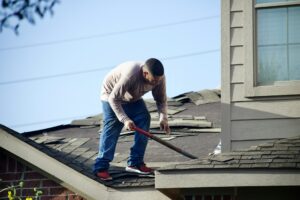Warm breezes, sunny beaches, and a lively cultural scene make St. Petersburg, Florida, a vibrant place to live. Yet the relenting heat and humidity can place severe demands on cooling systems, leading to soaring monthly expenses. One factor that often goes unnoticed is the impact of outdated windows. When windows don’t keep heat and moisture outside, indoor temperatures rise quickly, and air conditioning systems compensate for the extra load. Understanding why older windows cause higher costs—and how newer, energy-efficient models can help—empowers homeowners to protect both comfort and finances.
The Challenge of Rising Energy Costs in St. Petersburg
Over the past few years, residents across Pinellas County have experienced a steady increase in energy expenses. The region’s tropical climate and higher utility rates make taming humidity and keeping indoor spaces comfortable especially tough. An aging housing stock only magnifies these challenges.
While many homeowners focus on air conditioner upgrades or additional insulation, windows are sometimes overlooked. Unlike insulation hidden in the attic, windows are always in plain sight—yet old, inefficient windows can be responsible for a significant fraction of your energy bills. Some studies estimate that losing heat or cool air through windows can account for 25%–30% of total residential heating and cooling energy use.
In sweltering St. Petersburg summers, that can translate into considerable cost. When windows let in more warm air, the air conditioner works overtime. The connection may not be as apparent as a bright beam of sunlight, but the adverse effects accumulate on the monthly bill.
Why Older Windows Cause Higher Bills
A good window acts like a shield, regulating what enters and leaves a living space. When windows age, they often lose much of their sealing effectiveness. Frayed weatherstripping, warping around frames, and simple wear-and-tear can create gaps where conditioned indoor air can leak out, and hot, humid air can surge in.
- Poor Insulation: Many older windows were built from single-pane glass, which offers minimal insulation from outside temperatures. Modern windows usually feature multiple panes with insulating gas layers, drastically reducing heat transfer.
- Drafts and Leaks: Wooden frames can warp, and seals can degrade over time. Even minor cracks along thermal seals can turn your living area into a climate battleground, letting potent doses of heat sneak indoors.
- Minimal UV Protection: When older windows lack specialized coatings, the sun’s ultraviolet (UV) rays pour inside. This extra solar heat forces your air conditioner to remove additional humidity and cool more aggressively, raising energy use.
These subtle issues can significantly increase cooling costs, month after month. While other household equipment can help offset some inefficiencies, windows remain a common culprit behind higher-than-necessary energy bills.
The Impact of Humidity on Energy Usage
The subtropical climate in St. Petersburg brings intense humidity that complicates comfort and further strains cooling systems. Air conditioning doesn’t just reduce temperature; it also removes moisture from the air. When older windows leak warm, moist air indoors, a home’s humidity level can spike.
A few additional factors contribute to this burden:
- High Moisture Load: When steamy outside air seeps inside, your air conditioner must remove that extra moisture. Cloudless skies and high daily temperatures compound the effort, catalyzing even greater energy demands.
- Mold and Mildew Risk: Drafty windows leading to damp indoor areas can foster mold and mildew growth, which can be expensive to mitigate. Besides higher energy consumption, the cost of resolving moisture-related damage can become a serious concern.
Modern windows help homeowners avoid inflated bills and unwanted air quality issues by preventing substantial moisture intrusion.
Key Features of Energy-Efficient Windows
Energy-efficient windows keep cool air inside and reduce the warm, humid air that can infiltrate living spaces. Although these windows may appear similar to their older counterparts, they incorporate subtle technological improvements that make a tangible difference in daily comfort.
- Multiple Panes: Dual or triple panes of glass provide additional layers of insulation. Gases like argon or krypton are often injected between layers for supplemental thermal resistance, keeping interiors more stable regardless of outside temperature.
- Low-E Coatings: Low-emissivity (Low-E) coatings partially reflect sunlight’s infrared and ultraviolet rays, letting in natural light while diminishing excess heat. This helps to control solar gain without sacrificing a bright interior.
- Quality Frames and Weatherstripping: Vinyl, fiberglass, and composite frames provide superior durability and resist warping under Florida’s harsh sun. These frames and advanced weatherstripping minimize the risk of harmful air leaks.
- High Performance Ratings: Organizations like ENERGY STAR or the National Fenestration Rating Council (NFRC) independently test and rate many windows. These ratings demonstrate tangible energy efficiency features, helping homeowners make informed choices.
Combined, these design elements can dramatically reduce cooling requirements, lowering monthly electricity bills.
Economic Benefits of Upgrading Windows
For homeowners worried about spending money on an extensive home improvement project, window replacements are often worth the investment. While initial project costs vary, the potentially significant monthly energy savings can offset much of the outlay over time.
- Lower Cooling Bills: The most immediate advantage is reducing monthly energy expenses. Insulated windows help your cooling system reach and maintain comfortable temperatures faster, so less electricity is consumed.
- Potential Rebates or Incentives: Depending on local policies, you may be eligible for rebates or incentives on energy-efficient home upgrades. Checking resources like Energy.gov can help you identify relevant programs.
- Increased Property Value: Homebuyers in the Sunshine State prioritize energy savings. Modern windows aren’t just an aesthetic enhancement; they can bolster resale value and attract price-conscious buyers.
- Reduced Maintenance: Drafty windows can accelerate wear on air conditioning equipment. By letting your AC rest more easily, you can prolong its lifespan and reduce the likelihood of expensive repairs.
New windows can deliver everyday savings and longer-term returns when these financial factors converge. Many homeowners find that the accumulated monthly energy savings alone can help recoup a substantial portion of their initial costs while improving comfort throughout the year.
Protecting Indoor Comfort with Modern Solutions
Even a modest upgrade in window quality can translate to a more incredible experience inside, especially during the relentless Florida summers. Aside from cost savings, switching to modern, energy-efficient windows offers an opportunity to establish a stable, comfortable environment.
- Consistent Temperatures: Energy-efficient windows keep outside air at bay, reducing uncomfortable hot spots near windows and ensuring a more even indoor temperature. Rooms that once felt extra-warm can enjoy a newly balanced climate.
- Noise Damping: Double- or triple-pane designs also help insulate your home from outside noise—a helpful bonus for those living near busy streets or in densely populated neighborhoods.
- Improved Natural Lighting: Low-E glass filters out harsh UV rays while allowing abundant natural light to illuminate interior spaces. This offers a welcoming atmosphere without the added heat and radiation.
- Humidity Management: Home dehumidifiers and air conditioners don’t work as hard when better-sealed windows reduce infiltration. Indoor air stays drier, making rooms feel cooler at slightly higher thermostat settings.
Beyond comfort, these benefits are integral to long-term health and satisfaction. A stable indoor environment enhances quality of life by maximizing fresh air circulation, reducing the risk of mold, and offering a refuge from the elements.
Real-World Example: A St. Petersburg Homeowner’s Experience
Consider a family living in a 1970s-era home in a central St. Petersburg neighborhood. Over time, their single-pane windows had warped slightly, leaving narrow gaps around the frames. The family noticed their monthly cooling bill creeping higher, but assumed it was inevitable due to the sweltering local climate.
After discussing the issue with an energy consultant, the family decided to replace their single-pane models with modern variants featuring double-pane glass and low-E coatings. At the same time, they added fresh, tight-fitting weatherstripping. They observed several key improvements:
- Noticeable Reduction in Monthly Bills: The first full billing cycle post-installation revealed a 15% drop in cooling expenses. As the summer progressed, that difference remained steady, creating significant annual savings.
- Consistent Indoor Temperatures: The family’s living room, which had always felt muggy, now matched the climate in the rest of the house. There were fewer “hot zones” and less humidity altogether.
- Air Conditioner Relief: Their AC system no longer needs to run for extended periods throughout the day. During the hottest hours, it turned on less frequently, reducing the risk of costly system repairs.
- More Comfort for Guests: Visitors noticed the lack of muggy air and praised the balanced temperature in every room.
This example speaks to the real, everyday advantages of upgrading windows. For many St. Petersburg residents, improving window efficiency is a manageable project that addresses one of their homes’ most consistent leakage points.
Choosing the Right Windows for Your Home
With various window materials, brands, and performance ratings on the market, it pays to understand the key quality indicators. Regardless of brand, focusing on the following factors can guide you to the most efficient solutions:
- U-Factor: This measures how well a window prevents heat from escaping on cold days. The U-factor can still be relevant for evening or winter temperatures in a warm climate like St. Petersburg.
- Solar Heat Gain Coefficient (SHGC): This is crucial, as it measures how much heat from sunlight penetrates a home. For Florida’s sunny conditions, a low SHGC rating is beneficial because it keeps solar heat to a minimum.
- Energy Star Certification: ENERGY STAR’s ratings are geographically specific, identifying which windows are appropriate for hot climates. Touring ENERGY STAR’s climate recommendations can help you select windows tailored to St. Petersburg conditions.
- Material and Maintenance: Vinyl and fiberglass frames often require minimal upkeep. While aesthetically pleasing, wood frames need consistent sealing or painting to maintain their efficiency in Florida’s humid environment.
Understanding these performance metrics helps you match products to your specific home. Paying attention to factors like U-Factor, SHGC, and frame materials ensures you choose windows that balance cost and efficiency without compromise.
Installation Consistency Matters
Even the best windows won’t perform at their highest potential if improperly installed. While it’s tempting to save money by attempting a do-it-yourself project, professional installation can save homeowners future frustration and additional costs. Proper installation ensures that:
- Seals are airtight and thoroughly tested.
- Window frames align correctly with existing structures.
- Flashing is placed to prevent water intrusion and mold growth.
- Hardware and weatherstripping are correctly fitted to ensure peak efficiency.
When installers follow the manufacturer’s guidelines, the transition to energy-efficient windows becomes seamless. Before finalizing the project, professional insight can also catch structural issues like irregular framing or existing water damage.
Coordinating with Other Home Improvements
Windows are a core component in the overall efficiency of a house. Upgrading them goes hand-in-hand with other improvements that lock in comfortable temperatures:
- Improved Insulation: Adding insulation to walls or attics prevents energy losses or gains, boosting the effect of new windows.
- Weatherstripping Doors: Investing in new seals can further reduce monthly bills if outside air is still slipping through old doors.
- Shading and Landscaping: Exterior elements such as strategically placed trees or light-blocking shrubs can offer added cooling relief. They help reduce direct sunlight exposure on windows.
By coordinating a broader energy-efficiency strategy, you may find that a few targeted investments quickly transform a home’s climate control, cutting cooling bills and creating a refreshing indoor environment.
Looking Ahead: A More Comfortable Future
St. Petersburg’s subtropical allure isn’t likely to change—warm breezes and sunny skies will continue to define local life. With energy costs expected to climb, though, homeowners need strategies that pay off in the long run. Upgrading to energy-efficient windows remains one of the most straightforward and effective ways to safeguard comfort and finances.
Modern windows seal out excessive heat, stabilize indoor temperatures, and reduce the demands placed on air conditioning systems. Whether your home is decades old or relies on outdated replacements, high-performance windows add tangible value and ensure your oasis remains free from the region’s relentless humidity.
As you plan upgrades, remember the range of features and ratings that signify efficiency. Knowing the value of multi-pane glass, low-E coatings, strong frames, and professional installation gives you the confidence to select solutions tailored to St. Petersburg’s unique climate demands. It’s not only about slashing bills—it’s about enhancing the quality of life inside your home.Investing in thoughtful improvements can set the stage for years of savings, comfort, and peace of mind. Your windows shape how you experience life inside your home, and glancing at your monthly bills can confirm that superior window design matters more than most realize. With the right blend of technology and window installation expertise, you can become an empowered resident who enjoys St. Petersburg’s sun and warmth, without surrendering your bank account to the unrelenting Florida heat.




